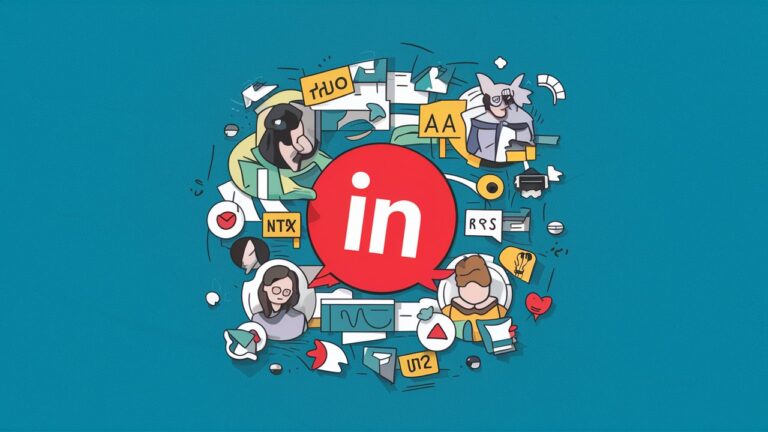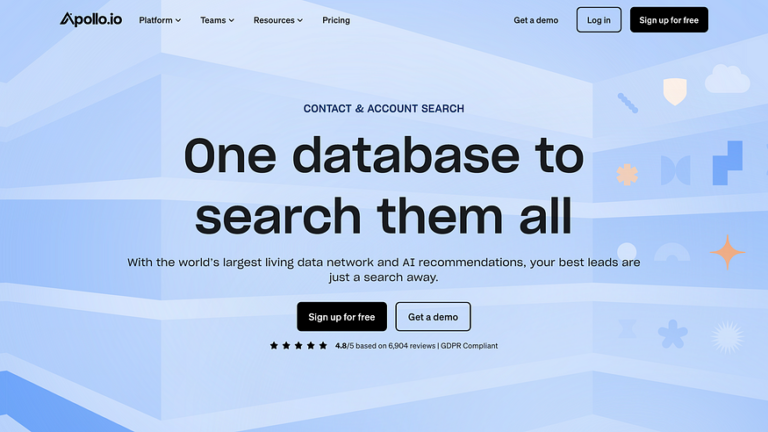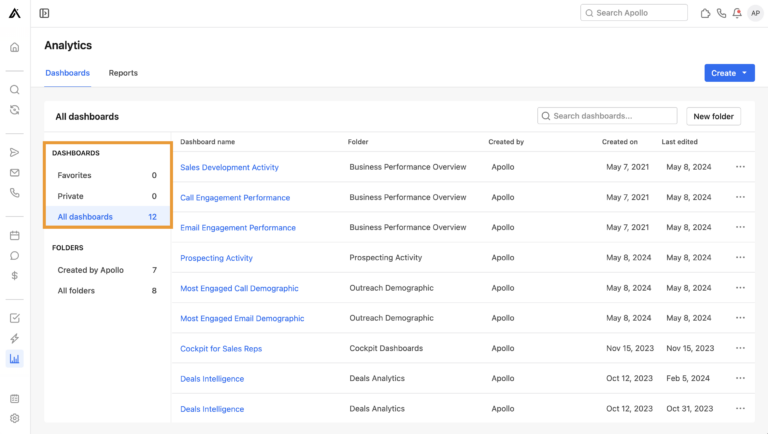30 lead generation strategies for your SaaS business

Lead generation is crucial for any SaaS company seeking to thrive in today’s competitive landscape. This article presents 30 proven strategies for attracting and converting qualified leads, increasing your chances of success in the ever-changing world of SaaS.
But if you’re scratching your head and wondering how to go about it, don’t worry. We’ve got you covered with these top 30 easy-to-follow lead generation strategies for your SaaS business.
1. Deploy CTAs that call for action
Many tech startup websites miss the mark by resorting to trite calls to action like “Contact Us” or, even less so, “Click Here”. As a potential lead, there’s not much more annoying. When designing your call to action, feel free to let your creativity run wild. However, if you’re looking for foolproof options, “Free trial” and “Book a demo” have been proven to generate substantial conversions.
2. Create captivating software showcases
Communicating the capabilities of your technology software on your website is no simple task. It’s easy to fall into complacency by simply including a screenshot. This can leave visitors straining their eyes and struggling to read the tiny text. To avoid this pitfall, it’s worth noting that the best in the business use flat graphics and video animations, which have proved highly effective.
3. Avoid “We-itis
It’s all too common for technology companies to talk excessively about themselves and their technology. Creating your website content in this way may not foster a connection between visitors and your brand. Instead, engage your audience by explaining how your technology can enrich their lives – focus on the emotional impact and how it can improve their lifestyle.
4. Use and regularly monitor Google Analytics objectives
Google Analytics Lenses are an extremely effective tool for analyzing your existing leads. Find out where they’re coming from, what they’re looking for and even what pages they visited on your website before becoming a lead. Use Google Analytics Goals to determine the effectiveness of your marketing efforts, understand why they’re succeeding and identify ways to optimize them.
5. Diversify your focus
Technology companies often make the mistake of exclusively promoting their core services on their websites and marketing campaigns. However, this is often not a viable strategy for lead generation. Converting a new prospect into a customer on their first visit to your site for a basic service can be very difficult. Strive to create products or solutions that offer your prospects value at a lower entry point than your core service. Strive to develop an offer that provides your prospect with a quick but impactful benefit at little or no cost.
6. Leverage landing pages
Landing pages are an extremely effective tool for lead generation and should be used by everyone. These pages should be designed with a highly targeted marketing campaign in mind, directing a specific audience to a tailored web page with content and calls to action that address the specific needs and problems of that audience.
7. Build trust with testimonials
Although it may seem obvious, many technology companies underestimate the necessity and potential of customer testimonials. Strive to actively collect positive customer reviews; these testimonials can greatly enhance your credibility. Strategically place your best reviews on your website, including the home page, landing page product pages and potentially a dedicated testimonial page. You can further enhance the impact by creating video testimonials. Testimonials help build trust in your brand, significantly influencing lead generation and conversion rates.
8. Simplify your message
When a prospect visits your website, they need to immediately understand what your company does and who it’s for. SaaS company websites often make the mistake of being too technical, wordy or creative. This can be confusing and turn potential customers away. Make your website simple and straightforward. The purpose, benefits and target audience of your technology should be easily identifiable.
9. Maximize efficiency above the waterline
“Above the waterline” refers to the part of your website immediately visible to visitors without scrolling. It’s crucial to engage visitors in this area because of their short attention span. Try to communicate four key points in this section:
1. Explanation of your technology
2. Your target audience
3. The main benefit of your technology
4. The next step the visitor should take.
10. Use Google Analytics
This tool enables you to track the user journey on your website. For example, if you notice that users often abandon after viewing the product page, this implies that the incentives to action may be insufficient. In response, you can introduce attractive links such as a blog post, demo booking or quote request. Prolonging users’ stay on your website increases the likelihood of lead generation.

11. Implement live chat
Live chat is growing in popularity due to its immediacy and personalized approach. Quick responses to queries dramatically improve the customer experience. What’s more, faster responses significantly increase the chances of sales conversion. It’s easy to set up and manage a live chat system, and it notifies you when a customer sends a message, very similar to Skype and Slack.
12. Be an opinion leader
In a competitive landscape, having a great product isn’t enough. Becoming an authoritative figure and expert in your industry equates to greater customer trust and increased lead generation. To stand out as a thought leader, produce unique and valuable content such as blog posts, vlogs, interviews and conferences. Engage in active interaction on social networks and maybe even write a book. However, remember to focus less on self-promotion and more on providing free advice and opinions on your industry.
13. Develop a value calculator
One of the main questions prospects often ask is what return on investment they’ll get from partnering with you. By creating an interactive value calculator, you can provide this information directly. While an ROI calculator won’t work for every business, the idea can be turned into a mini-questionnaire that brings value to the visitor. Giving the visitor this data can impress them and increase the number of leads – or encourage them to submit a contact form to access the results.
14. Optimize for mobile users
Many technology companies tend to neglect the mobile aspect of their websites. A glance at your Google Analytics might reveal that a significant proportion of your audience are mobile users. Given the marked difference between mobile and desktop browsing experiences, it’s imperative to fine-tune your lead generation strategies for mobile users.
Two recurring challenges stand out:
Make your CTA visible: The CTA is often hidden behind the menu. Solution? Copy it from the menu and place it prominently on the home page, where it’s easily visible without scrolling.
Increase CTA density: As mobile users scroll more, they need more CTAs on the website to locate them easily. So increase the number and distribution of CTAs.
15. Reorganize your sales and marketing materials
Professionally designed marketing materials can turn a cold lead into an interesting one. Sales presentations, case studies and email newsletters need to be brand-appropriate and well-designed. Many technology companies either don’t have these assets, or have designed some in-house that don’t look professional. Sending uninspiring presentations to prospects can lead them to lose interest in your company.
16. Eliminate payment details for free trials
Implementing a small change such as eliminating the need for credit card information when signing up for a free trial can dramatically increase your sign-ups. However, be careful when applying this tactic, as it could potentially have a negative impact on your sales. If your free trial sign-ups aren’t translating into actual conversions, consider trying this approach. Potential customers are often reluctant to share their payment information with companies that aren’t entirely convenient for them. Removing this requirement can potentially remove a significant hurdle in the sign-up process.
17. Adopt A/B testing
This involves showing two versions of the same web page to different audience segments to identify which version is more effective in terms of conversion. For example, you could show half your visitors a product page with price and the other half a page without price, then compare the results. A/B testing can also be applied to copywriting to identify the most effective call-to-action. It helps identify the lead generation approaches that work best for your business.
18. Use customer surveys
Surveys or quizzes can be an effective way of interacting with both old customers and new prospects. When done correctly, they can attract prospects and provide crucial information about your market. You can sweeten the deal by offering rewards or prizes for completion. This will generate leads, as well as information that can guide your sales decisions, such as potential new product features or the need to adjust your prices.
19. Abundant CTA
Calls to action should be prominently displayed on your website and in other marketing materials. Place a clear CTA on your website’s navigation bar and footer to appear on all pages, and make sure it stands out with a colorful button or well-designed banner. CTAs should also be included in the content section of all main pages, including home, product and pricing pages. In addition, include CTAs in your e-signature, social media cover photos, sales brochures, webinar closing slides and business cards.
20. Using Facebook’s cascading videos
This tactic involves creating two videos. The first is a general message offering tips, advice or opinions without any call to action or sales promotion. After promoting this video, a second, more specific video presenting your company or technology should be created. This second video should only be shown to those who watched a significant part of the first video, targeting an audience already interested in your company. This method increases the likelihood of viewer engagement and a higher percentage of views.

The next step is to create a third video, this time with a clear call to action, such as inviting viewers to a webinar, booking a free strategy call or offering a free trial. This video should only be shown to those who watched an important part of the second video. Therefore, your call-to-action video is aimed at people who have already expressed interest in your previous content, qualifying them as potential leads. In this scenario, a conversion rate of 10% could potentially generate 60 qualified leads.
21. Adopt a “less is more” approach
Technology companies often overload their websites with too much text in an attempt to accurately explain their technology. However, web users generally have a limited attention span and are likely to skim rather than read large chunks of text, thus probably missing your key message. Present your company more attractively by incorporating other forms of content such as videos, infographics, software animations, bullet points or icons. These alternatives can offer a better user experience while effectively conveying your message.
22. Evaluate when to go deep
Technology companies are often proud of their advanced solutions and tend to explore detailed descriptions of their coding, hardware specifications, AI, blockchain processes and so on. While this may appeal to a tech-savvy audience, it can be off-putting to a more general audience. audience and potentially turn off a large segment of your potential customers.
Your message should attract a wider audience by focusing on explaining your technology quickly and concisely, highlighting the problems it solves and the benefits it offers customers, all on your home page.
Meanwhile, on your product or solutions pages, it’s possible to be more technical. It can be useful to designate a clear area of the page as “technical specifications” or “technical details”, to cater for visitors interested in technical details while giving other visitors the option of ignoring them.
23. Organize individual sales paths
With multiple target audiences, it’s essential that none of them feel excluded or ambushed by irrelevant content. Rather than creating content for everyone, try to quickly classify the type of audience they belong to, and direct them to pages tailored to them. Achieve this with clear calls-to-action prominently displayed on your home page, guiding visitors to specific pages designed with their needs and goals in mind. By quickly directing visitors to a web page with content designed specifically for them, the likelihood of lead generation increases dramatically.
24. Create a dashboard
You can develop a quick quiz-style questionnaire linked to your prospects’ industry, goals or challenges. Once completed by a potential customer, they are instantly sent to a summary of valuable information tailored to their answers.
This strategy is a great way to offer your prospects something valuable, free of charge and with minimal time investment. The entire process is automated, resulting in a prospect with in-depth insight.
25. Measure constantly against competitors
Responsive ads on the Google Search Network change the way you create your campaign. Instead of creating static Google ads that require constant monitoring, tweaking and fine-tuning, Responsive Ads on the Search Network automate most of the tedious tasks. Traditional approaches can require you to either invest hours or pay a substantial amount to an SEO agency each month.
With Responsive ads on the Search Network, you can create up to 15 different titles and 4 unique descriptions. Google then automates an A/B testing process, constantly rearranging the ad content to determine the optimal combination that delivers the best results. This allows your ad to remain competitive and effective without constant monitoring and adjustment.
26. Avoid skimping on copy quality
Technology companies are usually made up of brilliant people, often with strong writing skills. However, excellent copywriting requires a specific set of skills.
Just because someone knows how to write clear emails or generate professional white papers doesn’t mean they can create a compelling brand, website or marketing copy. A skilled copywriter understands how to create captivating headlines, connect with audiences, maintain a consistent brand tone, provoke inquiries and integrate SEO.
It may seem logical to keep copywriting in-house, given your deep understanding of the industry. The fear that an external copywriter won’t fully understand your complex technology offerings is justified.
And yet, in our experience, we’ve found it beneficial for the customer to provide a first draft or bulleted list detailing their preferred content for each page. A copywriter can then refine, improve and inject style into the copy. Since the copywriter doesn’t create from scratch, costs are considerably lower and content remains accurate.
27. Introduce a “Freemium” or profitable entry point
Technology start-ups generally focus all their marketing efforts on a single product or service. However, there’s a downside to this approach: if a prospect isn’t ready to buy, they’re unlikely to book a demo or take a free trial, resulting in lost leads. It’s crucial to develop alternative products, solutions or value-added offers to introduce prospects to your sales ecosystem.
These alternative offerings could be free, such as a series of podcasts, e-mail newsletters, webinars or strategy calls. They could also be low-cost services. Try to create solutions or a section of your product that delivers value at low cost.
It’s a low-barrier product, which makes it easy for customers to sign up. This brings them into our ecosystem and is a perfect opportunity to demonstrate our expertise.
28. Understand your customer’s fundamental problems and overriding objective
Once you’ve identified the demographic of your target audience, the next consulting step is to understand their issues and objectives. Don’t limit this to businesses; also consider the people who use technology and the people who make decisions.
This information could form the basis of various aspects of your project, such as copywriting, product development, advertising and your pitch strategy. Consider creating a comprehensive list of problems your customers might face.
From this long list of problems, identify the most critical ones. These vital insights can help you rethink your business model to better serve your customers. A deeper understanding of your customers’ needs and problems will enable you to better connect with potential customers and make a significant impact on your prospects.
29. Offer personalized demonstrations
Another great way to attract potential customers to your SaaS business is to offer customized demos. Instead of relying on generic demos or video tutorials, if possible, offer individual demos tailored to the needs of potential customers. This not only gives potential customers a better understanding of how your software can solve their specific problems, but also provides an excellent opportunity to connect with potential prospects, better understand their needs and build trust.

30. Take up a challenge on social networks
My final strategy is to take part in a video challenge on social networks. Although it may take time, you’ll eventually become a thought leader in your field. When you reach that point, you’ll see an increase in leads.
Taking part in a challenge on social networks involves identifying a challenge relevant to your sector, understanding the rules and creating suitable content. While you’re taking up the challenge, be sure to actively interact with other participants to increase visibility and promote your actions on your social networks to attract more engagement.
Then be sure to monitor the strategy’s success in terms of lead generation, engagement and conversions, and reflect on lessons learned for future social media strategies.
Conclusion
By applying these 30 lead generation strategies, your SaaS business will be better positioned to attract, engage and convert qualified leads. Don’t forget to analyze your results regularly and adjust your tactics accordingly to maximize your ROI.





